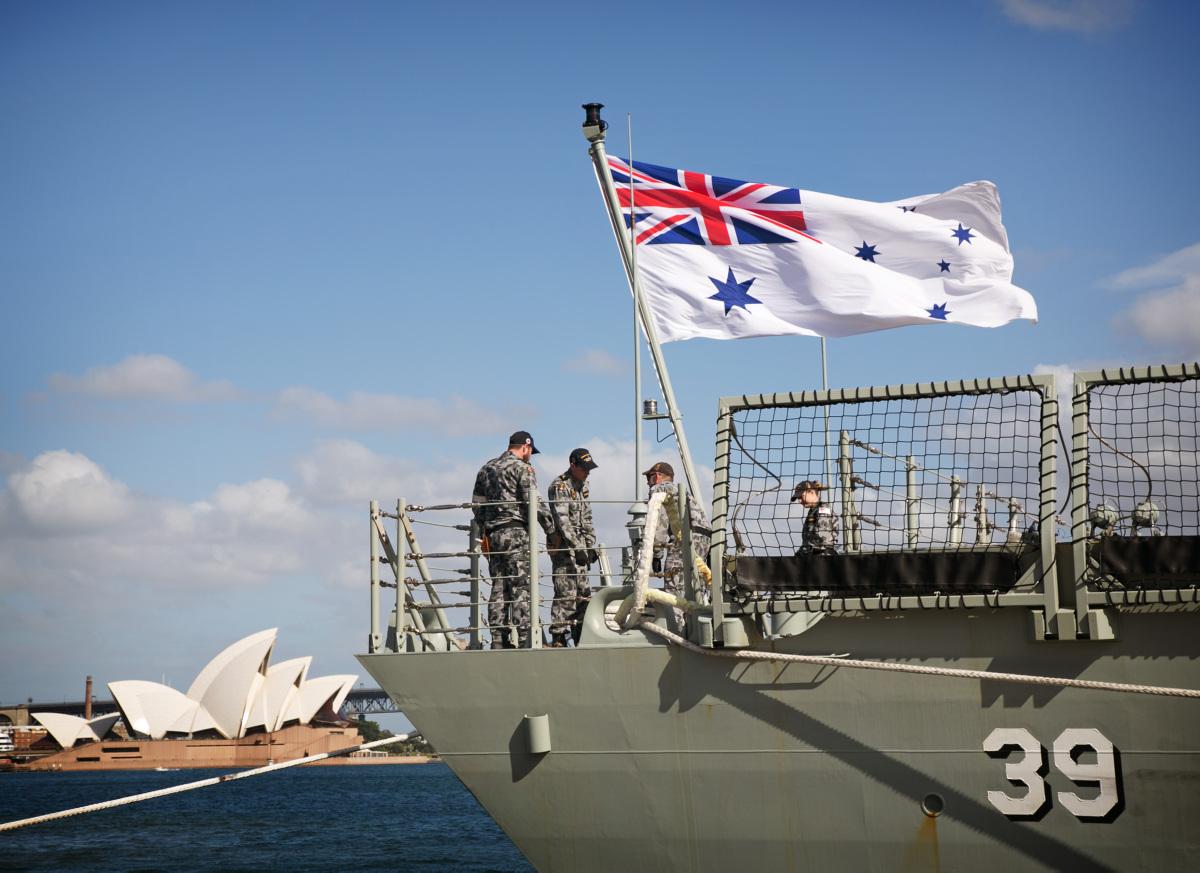
A UK blog, the Thin Pinstriped Line, has produced a piece about the Royal Marines titled ‘The Corps huh, What is it good for?’
Given Australia’s considerable investment in amphibious capability, a discussion about the future of the Royal Marines is relevant to us. But it needs to recognise that a succession of UK governments have failed to articulate Britain’s national ambitions or a grand strategy to achieve them. They’ve lacked clarity on the utility of military force, which undermines the ability of the Ministry of Defence to fight its corner against the Treasury and makes internal MoD discussion on force structures largely subjective. An example of the resulting incoherence was the disbanding of the Harrier force while the Queen Elizabeth class carriers were in the final stages of being built.
From the time of Queen Elizabeth l, British strategy was a response to its weakness in population and resources compared to the main continental powers. Britain depended on maritime trade to generate wealth and on wealth to fund maritime power. Its greatest fear was that a European power would become dominant enough to out-build the Royal Navy and destroy the country’s wealth-generating trade. Britain’s strategy for preventing that was to always back the second strongest European power, thereby forcing the continental powers to invest in armies instead of navies while allowing Britain to do the opposite. British maritime power included the use or, more often, the threat of amphibious attack. Contrary to the assertion in the UK blog piece, amphibious operations didn’t take off in World War II. There are dozens of 18th and 19th century examples of British attempts to utilise amphibious power. One-third were costly failures or utter debacles.
In 1914, Britain abandoned its traditional strategy and became a serious European land power for the first time. But it remained dependent on amphibious operations and still proved inept at them, starting with Tanga and Gallipoli, though they eventually got it right in 1918 at Zeebrugge. In World War II, after debacles in Norway and Dakar, they succeeded in May 1942 in Operation Ironclad, capturing Madagascar from Vichy French forces. The British were historically poor at maintaining amphibious skills and needed to experience painful failure to reawaken them.
Britain’s chequered amphibious history is relevant to Australia because the factors that determined its strategy for 300 years apply, in modified form, to us. Australia’s population is not comparable to those of its neighbours, and they are catching up fast in the areas we have relied upon to compensate. Unlike Britain, Australia is in the planet’s most archipelagic region. We depend on lines of communication through those archipelagos and any conflict there would be critical to Australia. Despite Australia’s geography, its defence policy has never recognised archipelagic warfare as a specific type, with unique characteristics and interdependencies. In archipelagic warfare, the question posed by the UK blog might be inverted—non-amphibious land forces, what are they good for?
What is the priority for land forces in Australian strategy? Is it to support our US ally and to adapt the resultant structure to Australia’s own purposes, or is it to structure primarily for Australia’s purposes and adapt to coalition support? Either way, the case for an amphibious capability is strong, particularly once we recognise the limits of our power and its relative trajectory in the region.
Australian policy is to be able sustain a deployed brigade-sized task force, but our ability to do so in hostile circumstances is already questionable and will become more so as our relative strength declines. A deployed brigade is the maximum the army’s force structure allows it to generate, but that’s barely adequate to protect its own logistic tail in a hostile environment. Australia cannot, by itself, generate the critical mass required for successful long-term land commitments. It’s questionable whether it’s even feasible to sustain three brigades and their full suite of enablers at home, let alone deploy them.
Even if we could overcome those obstacles, a deployed brigade on a single landmass amid tens of thousands of islands hardly registers strategically and it’s easily bypassed. An amphibious force, conversely, can advance and withdraw and concentrate and disperse, according to the situation, without infringing anyone’s sovereignty. It allows us to have a presence and influence without an irrevocable commitment. It’s a far more flexible and responsive political tool than a relatively lumbering brigade. It’s also achievable within our means.
In coalition operations, the political importance of Australia’s contributions has always been greater than their tactical significance. US forces operate on a scale that’s difficult for those who haven’t seen it to conceive. Had we not turned up in Korea, Vietnam, Iraq or Afghanistan, the US would have filled the gap without undue strain. The support that US tactical commanders appreciate most is in areas where they are stretched most. Any number of allies can provide them with a conventional brigade which will suck up as much logistic support as a US one, but gives US commanders less freedom of action. Few US allies can generate an amphibious ready group. The US routinely maintains three such formations forward deployed. It’s hard to think of any other area in which Australia could take a one-third share of the burden. That would be noticed in Washington.
A senior Australian Army officer recently observed that troops aboard our new landing ships are members of the army, not marines. That’s true, but the obvious question is, ‘Why?’ There’s an implied assumption that formations which become marines somehow lose some effectiveness in land operations. British and American experience suggests that, except for the need to avoid high-end armoured warfare, the opposite has usually applied. Is now the time for the army’s priority role to become amphibious warfare? Perhaps the answer depends on whether Australia’s declared maritime strategy is real or rhetorical.